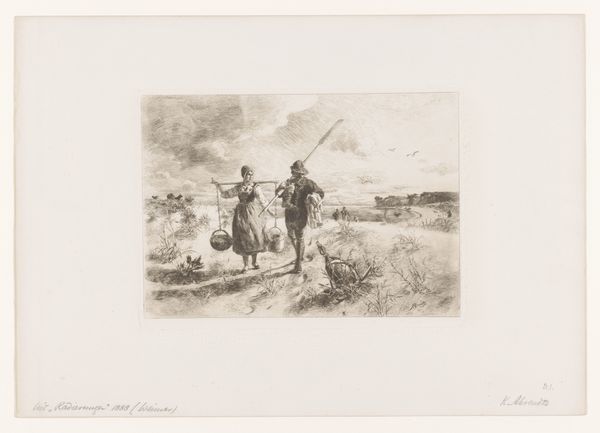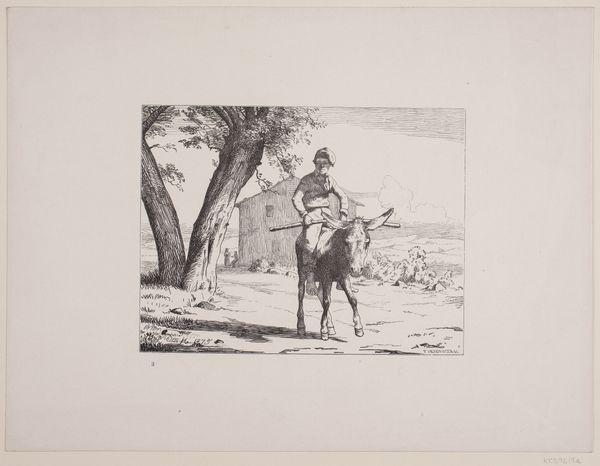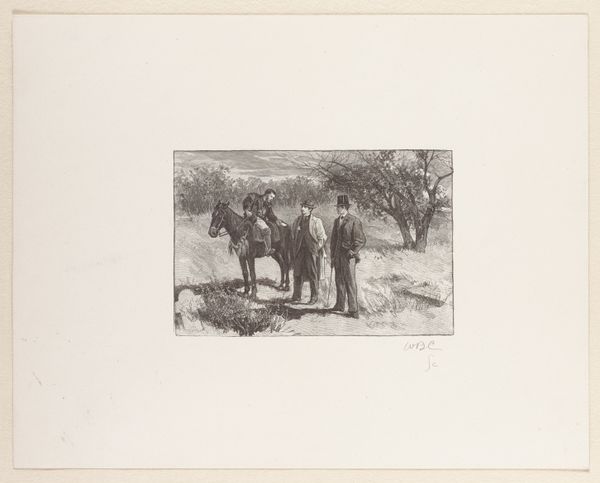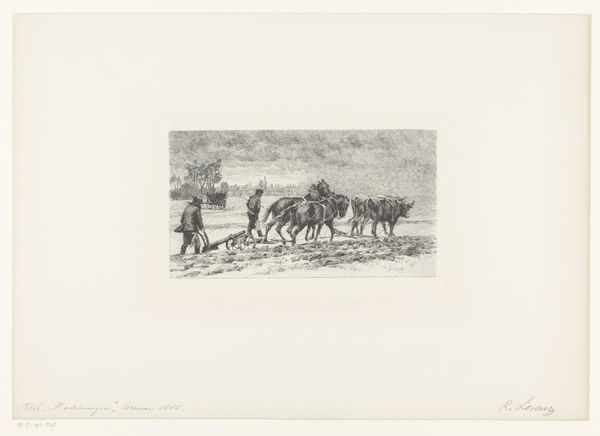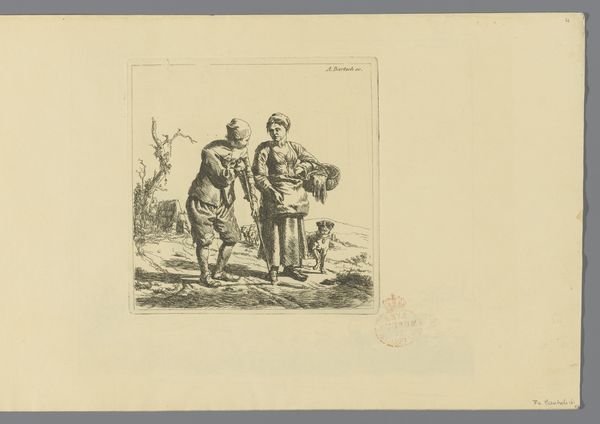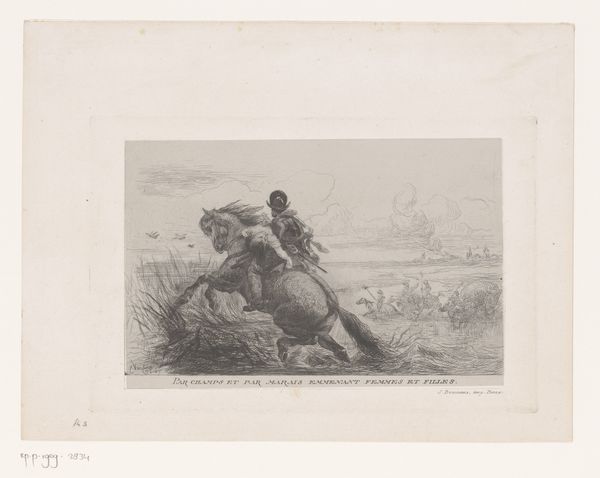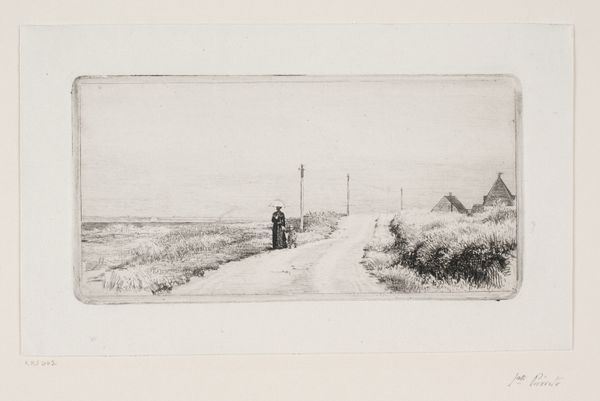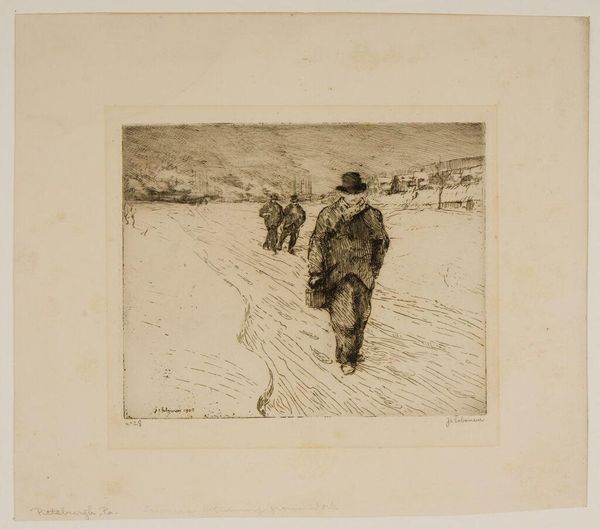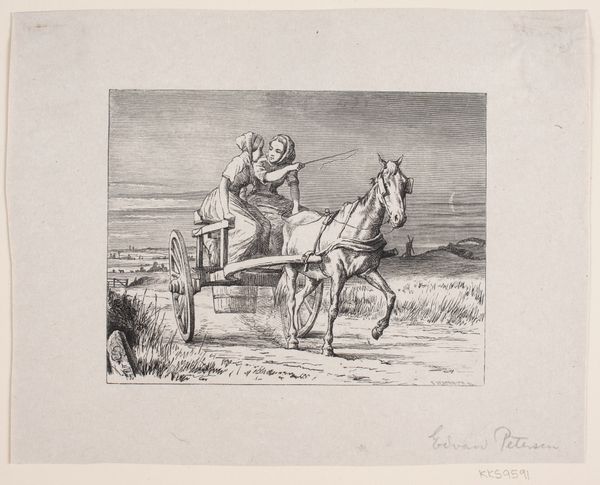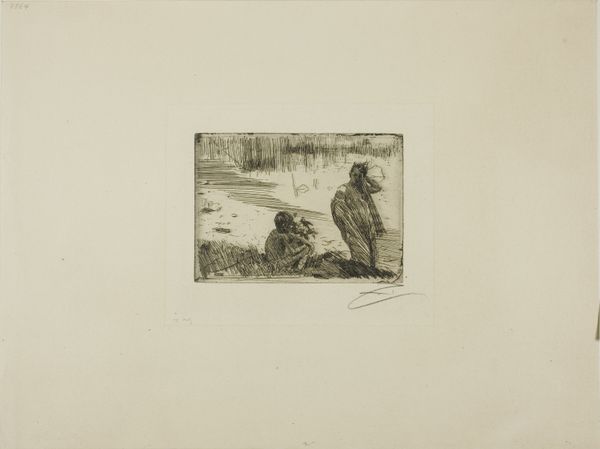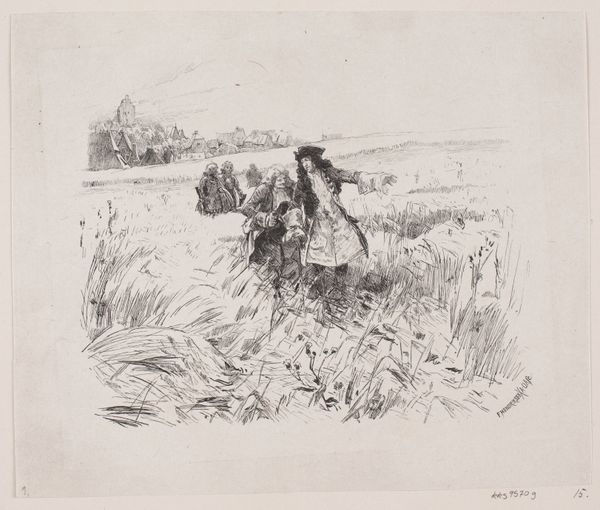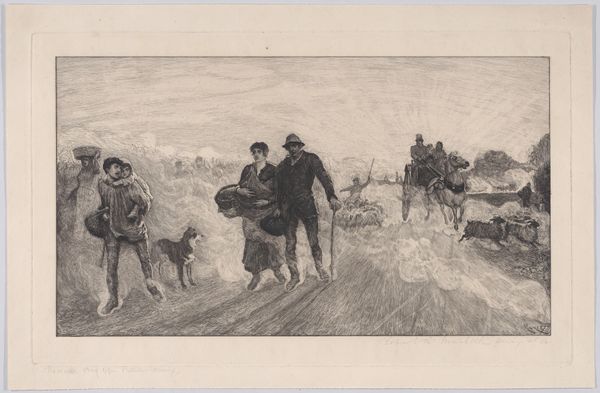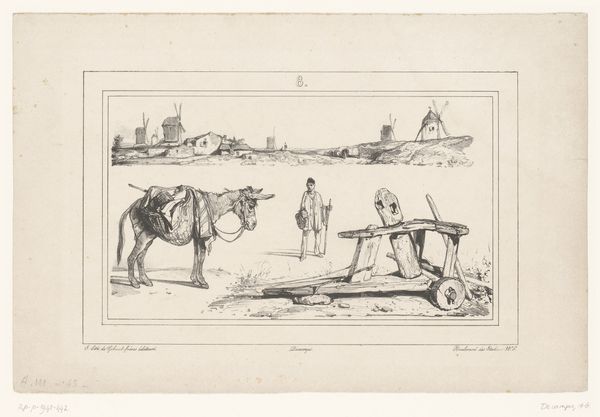
Illustration til H.C. Andersen, "Kejserens nye klæder" 1895 - 1899
0:00
0:00
print, engraving
#
pencil drawn
#
narrative-art
# print
#
pencil sketch
#
landscape
#
pencil drawing
#
engraving
#
realism
Dimensions: 147 mm (height) x 188 mm (width) (billedmaal)
Curator: This is Waldemar Bøhme's illustration for Hans Christian Andersen's "The Emperor's New Clothes," dating from 1895-1899. He employs an engraving, maybe over a pencil drawing or sketch. Editor: It has such a melancholy atmosphere, doesn't it? The men trudging along a dusty road... I immediately think of the working classes, of the journeys that are often arduous and repetitive. Curator: Note how the artist used rather simple, readily available materials to render commentary on 19th-century Danish society and political satire through popular literature. We’re distanced, perhaps, because we have only grayscale. Yet that landscape almost pulls you into their world. Editor: Absolutely. There’s such a deliberate choice in portraying these figures not as royalty, but as common travelers. Consider the subversive power of the artist highlighting their labor through this visualization. The artist’s work raises questions about those in power— who they align themselves with and where real work is truly sourced from. Curator: You can almost feel the weight of their journey, their material condition informing how they relate to their context as rendered with such accessible methods! The social implications behind the choices Bøhme made seem really deliberate. Editor: Precisely. Think about Andersen's tale: the con artists' illusory clothing becomes a symbol of deceptive power. And here Bøhme chooses to depict those outside that elite sphere of illusion. How many were truly in on the deception of this narrative, if we look at this historically? Curator: The tangible quality of printmaking adds another layer – multiple reproductions circulated widely. What this print would have materially been for people during this period really impacts how people see. Editor: And who gets to define value—in art, in clothing, in labor? This illustration prompts us to consider what’s truly 'visible' and valued within societal structures, and whose voices echo the loudest. Curator: Well, it's a fascinating example of how an illustration, grounded in relatively inexpensive and available methods, can provoke reflections on art and society’s material values. Editor: Exactly. It highlights the constant negotiation between illusion and reality and makes us reflect on that tension’s role throughout society then and even still today.
Comments
No comments
Be the first to comment and join the conversation on the ultimate creative platform.
